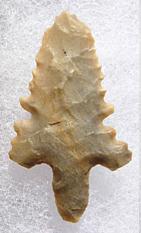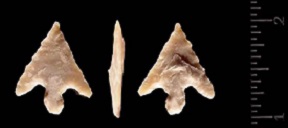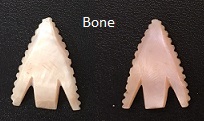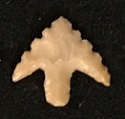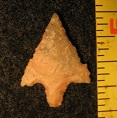Name Details:
Named By: J. Charles Kelley
Named For: Perdiz Creek, Presidio
County, Texas
Date Identified: 1947
Type Site: Lehmann Rock Shelter, Gillespie County, Texas
Perdiz
AKA:
Nopal Point (Taylor, 1966)
Cluster:
Commonly Utilized Material:
Date:
Cultural Period:
1,000 - 500 B.P.
Late Prehistory
Medieval Warm to Little Ice Age
Glacial Period:
Culture:
Outline is Representative of Size and Shape:
Description of Physical Characteristics and Flaking Pattern:
This is a small thin
triangular point with a contracting stem. This point has a flattened to elliptical cross section. The blade is primarily
straight and commonly has serrations. The shoulders are barbed. The stem is long and contracting. The stem is commonly one third to one half the length of the point. The base is primarily pointed, but may vary to convex or rounded. This point is finely flaked with a random flaking pattern.
Size Measurements: Total Length
- 15 to 60 mm, Stem Length - 5 to 15 mm (typically 1/7 to 1/2
the total length), Width - 12 to 30 mm (Suhm and Krieger,
1954).
Distribution:
Distribution Comments:
This point is primarily found from the Trans
Pecos region of Texas and Chihuahua and through-out the Rio Grande River
valley. Found northward into the Red River Valley and eastward
into western Louisiana. Found southward into southern Tamaulipas
and northern San Luis Potosi and northern Zacatecas.
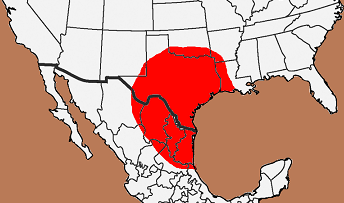
Additional Comments:
Kelley, Campbell, and Lehmer
first described this point in 1940, but did not name it. J Charles
Kelley named this point Perdiz Pointed Stem in 1942. In 1952 a slight variant was named the Foyle Flake by Miller and Jelks
(1952). This variant is flaked on one face while the other face is left smooth and unworked which is considered the same type as the Cliffton point. The Cliffton point is considered a preform for the Perdiz point and it also is a
unifacial flake point which
may be the same type as the Foyle Flake
In 1966 W. W. Taylor named this point the Nopal point for examples he found in northeastern Mexico.
Suhm and Krieger (1954), note that this point has a great degree of
variation in the size. It can range from a medium point ranging up to
60 mm which could almost classify them as a dart point while others are well
within the arrow point classification.
Other points in this Cluster:
Point Validity: Valid Type
Kelley was a distinguished
anthropologist who served as Curator of the Archaeological Museum at the University of Texas-Austin and was instrumental in setting up the Department of Anthropology at the University of Texas-Austin. He specialized in the archaeology of western Texas. This type was named in a professional publication and has many professional references. This is considered a valid type.
.
Age Details:
References: (See Reference Page, Entry Number):
8,
23, 30, 115, 178, 182, W11
Perdiz Projectile Point, Perdiz Arrowhead
Nopal Projectile Point, Nopal Arrowhead

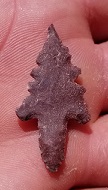

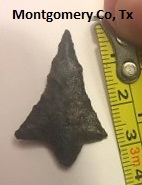


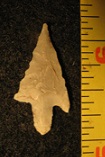
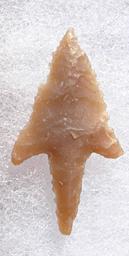
.jpg)
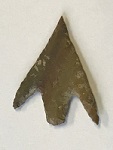
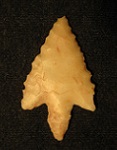

.jpg)
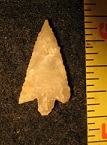
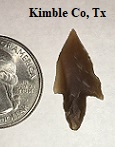

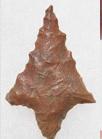
.jpg)
.jpg)

